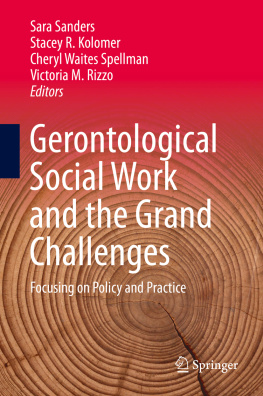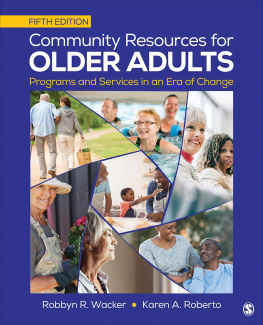Background and Overview
The Grand Challenges for Social Work initiative was developed in 2012 by the American Academy of Social Work and Social Welfare in collaboration with leading social work researchers and academics to address some of the largest social challenges of the century (Padilla & Fong, 2016). It strives to anticipate societys greatest problems, identify opportunities for social change, locate resources for change, develop success scenarios for social work, and raise vital scientific questions (AASWSW, 2015) and aims to address primary issues that impact overall well-being and social environment, including identity and recognition, love and nurturing, nutrition, shelter, family responsiveness, social protections, public health, medical care, education, opportunities for life experiences, information, employment, economic resources, financial services, systems for safety and justice, meaningful participation in society and personal fulfillment (Sherraden et al., 2015, p. 5).
Grand challenge initiatives are designed to tackle a limited set of broad problems that have solutions that are within reach (Uehara et al., 2015). The focus is on both internal and external impacts of societal change that take place for an extended period of time. Internal impacts are related to the field of social work directly, including changing the identities of social work, impacting social work education, and working collaboratively with national organizations and social work educators and leaders. External impacts of the Grand Challenges include the development of strong, interdisciplinary research agenda and programs, public education about social work, increase funding for social initiatives, and strengthening the pool of future social workers and social work educators. During the next 10 years, the Grand Challenges for Social Work aim to ensure healthy development for all youth, close the health gap, stop family violence, advance long and productive lives, eradicate social isolation, end homelessness, create social responses to a changing environment, harness technology for social good, promote smart decarceration, reduce extreme economic inequality, build financial capability for all, and achieve equal opportunity and justice.
Aging in America
In the United States, there are over 46 million people age 65 and over. In 2016, there were 27.5 million older women as compared to the 21.8 million older men with that disparity increasing as people age (Roberts, Blakeslee, & Rabe, 2018). Today, most older Americans identify as white with nine percent reporting as black and eight percent identifying as Latino (Roberts et al., 2018).
Physical and mental health issues are a challenge for many people over 65. Obesity rates in older adults between ages 65 and 74 have risen 40% (Mather, Jacobsen, & Pollard, 2015). A quarter of older adults live with multiple chronic health conditions such as hypertension, diabetes, and arthritis. Five million people are living with Alzheimers disease (Mather, Jacobsen, & Pollard, 2015). By age 85, 55% of women and nearly 41% of men report having a physical limitation (Anderson et al., 2012). In addition to the impact on the older adults themselves, family and friends can be physically and economically burdened by the stress and strain of caregiving for an impaired older adult.
Financially, older adults today are doing better than previous generations of seniors. However, there continue to be economic challenges for some, particularly for women and persons of color. Twenty-one percent of married couples and 43% of single people rely on 90% of their income from Social Security. Eighteen percent of Latinos and 19% of African American older adults live in poverty (Mather, Jacobsen, and Pollard, 2015). Due to time off for caregiving and lower-wage work, women are more likely to be struggling financially in later years than men. Most concerning is that after meeting monthly expenses, one third of older adults have no money left. Nearly three million senior households or approximately 23% of 65+ households live with food insecurity (Fernandes et al., 2018).
The aging of our society is a critical social issue as we move deeper into the twenty-first century. Demographic trends indicate that the number of adults age 65 and over will increase to about 80 million by 2040, representing 21% of the US population (Administration on Aging, 2012). It is also projected that the older adult population will be more racially and ethnically diverse (Vespa, 2018). By 2035, more people in the United States will be over age 65 than under 18 (Vespa, 2018). With the changing demographics, there will be significant health and economic challenges for society to address. For example, Alzheimers disease could triple by 2050 impacting 14 million people (Mather, Jacobsen, & Pollard, 2015). The increasing number of older adults in the United States, as in most places across the globe, poses challenges to families and caregiving, healthcare systems, mental health services, community-based support programs, long-term care, housing, transportation, employment, poverty, retirement, and economic security. It also presents opportunities to craft and implement policy, strategies, and best practices to serve and support our now diverse and aging society. Gerontological social work must be at the forefront and lead in this arena by addressing these and other remerging societal challenges.






